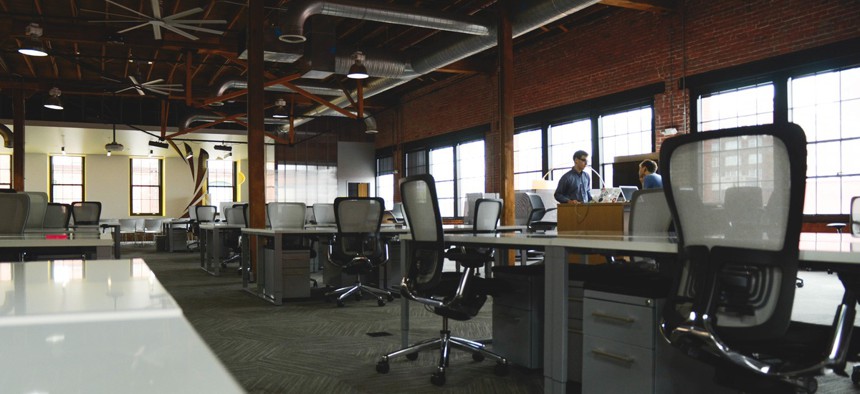
startupstockphotos.com
'Get Out of My Face!' We’re More Antisocial in a Shared Office Space
Research shows shared work spaces are not just distracting but bad for workplace friendships.
“If we all work side-by-side in an open-plan office or ‘hot desk,’ moving from place to place, it’s sure to increase collaboration!”
It turns out that may be wrong. If you don’t have your own space, perhaps you are better off working remotely with your cat for company.
Our research found that there were increases in “employee social liabilities” in shared working spaces: distractions, uncooperativeness, distrust, and negative relationships. More surprisingly, both coworker friendships and perceptions of supervisor support actually worsened. Although prior researchers have claimed shared work spaces can improve social support, communication, and cooperation, our results indicated that coworker friendships are of the lowest quality in hot-desking and open-plan arrangements when compared to those with their own offices or who share offices with just one or two others. It is possible that these shared offices may increase employees’ use of coping strategies such as withdrawal and create a less friendly environment in a team.
As part of our research, we surveyed 1,000 working Australians. We asked them whether they shared their office space with others, what sort of coworker friendships and supervisor support they had, and any negative relationships they had (such as lack of cooperation or distrust).
We found that shared environments did not improve coworker friendships and, in addition, they were associated with perceptions of less supportive supervision. The finding may be because employees who receive either too much monitoring or only informal supervision perceive their supervision to be of lower quality than those who have dedicated supervision meetings. It could also be that as employees become more irritated, suspicious, and withdrawn in a shared workplace, their relationships with their supervisors and colleagues deteriorate.
Other research also supports the idea that the benefits associated with shared spaces are aren’t all they are cracked up to be. Instead, it shows that cooperation becomes less pleasant and information flow doesn’t change in a shared office space. This is not great news for employees in an age where shared space and hot-desking is increasing alongside the use of mobile technology like laptops, smartphones, and tablets. This, together with the high cost of office space, has brought about a desire to use physical office space more flexibly.
So, if this trend toward shared space is not likely to be reversed, how do employees survive?
Surviving a shared office space
The best situations for workers we studied were having your own office, sharing with just one or two others, or working from home. However, we’re not all that lucky.
One way to combat visual distractions from nearby co-workers can be to use panels, book shelves , or “ green walls ” of plants. Noise from the office can be cancelled out with headphones . However, these interventions will depend on whether they are suited to your job, workplace, or your fellow employees.
Researchers Pitt and Bennett describe a large office redesigned to include not only hot-desking, but also “touchdown areas” (free desks to allow quick access to information), “bookable offices” (rooms that can be booked in advance), “collaborative workspaces” (for group work, possibly with teleconferencing capabilities), and finally “break-out workspaces” (relaxed couches and low tables for spontaneous, informal collaborative work).
We are not suggesting workers should be afforded unlimited privacy and solitude— some spontaneous interaction is needed for many types of activity-based work to succeed. Too much, and the distractions will outweigh any potential collaborative benefits. Too little, and the benefits are not evident.
![]()
This post originally appeared at The Conversation . Follow @ConversationUS on Twitter.






